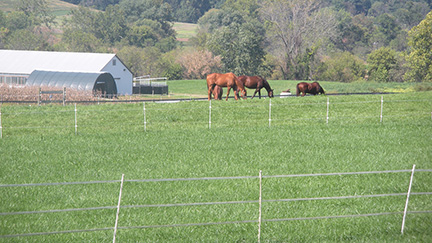by Katherine Rizzo (2007)
Eventing is a unique equestrian sport that combines several elements of other disciplines into one sport. The three phases of eventing are dressage, show jumping, and cross-country.
In the dressage phase, horses and riders are asked to perform a series of movements on the flat and are judged on well they execute these movements and how accurate a test they show. In a horse trial (typically run over one day), the show jumping phase is next. For this phase, the jumping obstacles are located in an enclosed area and are made of rails that can fall if tapped by the horse. Riders are assessed penalty points for any rails that are knocked down or stops the horse might have. The final phase of eventing is cross-country. Here the jumping obstacles are set in an open field where varied terrain plays a part in the difficulty of the course. The fences on this course are solid and do not knock down. Obstacles can include drops, banks, water crossings, and ditches depending on the level. At a Three Day Event, the cross-country phase is done before show jumping and the entire event is run over three to four days.
The levels of eventing start with Beginner Novice, which is a good introduction to the sport. From there you move on to Novice, Training, Preliminary, Intermediate, and Advanced. At the Training level you will begin to see Three Day Events with the “Half Star” being the three-day for the Training level. After the Half Star, you have One, Two, Three, and Four Star events. There currently are only three Four Star Events in the whole world, one of which is held at the Rolex Kentucky CCI**** in April.










